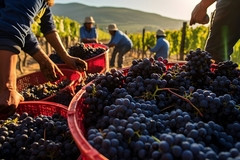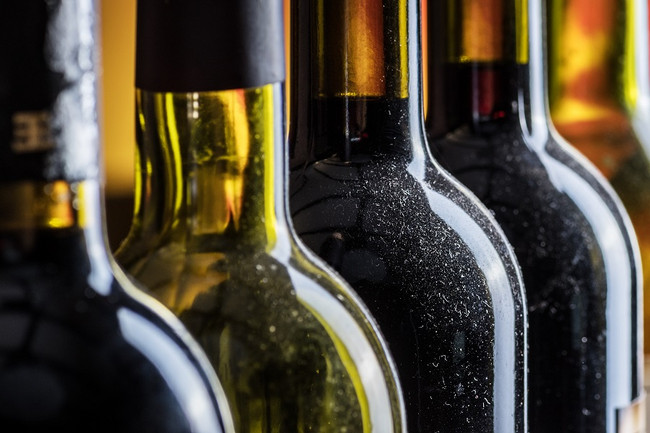✕



✕

Tag:EU wine trade barriers climate change 2024-10-17 11:47

The EU’s wine sector is grappling with a crisis that has sprung the European Commission and member states into action. The challenges facing the sector are many, including an e-commerce landscape riddled with red tape, trade tensions with countries with key markets, climate change, and low consumption rates among consumer cohorts.
Amid this, Ignacio Sánchez Recarte, secretary general of the European Committee of Wine Companies (CEEV), the representative professional body of the EU industry and trade in wines, sits down with Food Ingredients First to identify trade hurdles, potential digital and scientific developments and the need for a cultural revamp to boost the EU market.
Can tech help build resilience?
At the outset, Recarte highlights two key strategies to assist smaller wineries: political willingness to adopt the latest technology and the reduction of rising production costs through financial incentives.
“We are requesting the Commission to increase its support for innovation and investment. The idea is to get R&D solutions, or solutions based on R&D that the EU has supported and then to get direct finance to the companies that can implement these innovative solutions. This will cover labor shortages. The other is an adaptive legal framework to reduce the cost of marketing our wines.”
He highlights that in the past, investment in R&D has improved how grapes are harvested, for example. Additionally, drones and artificial vision management of the vineyard have reduced on-farm labor costs.
CEEV’s advice comes as climate change hampers harvests, making wine production unpredictable. This and a decline in long-term structural wine consumption in key markets form the core of the EU’s wine crisis.
Additionally, Recarte says genomic techniques and digital tools can help vineyards become more resilient, with “hundreds of examples” from areas like La Rioja in Spain with certain varieties or in Sicily and Hungary.
“Climate change is a combination of very different climatic events and their frequency. One of them is drought or a lack of rain or water. Even though vines are super resilient plants already used to extreme weather, they are suffering a lot. We need to accelerate the selection of more resistant plants to local environmental problems.”
“Genomic techniques are improving the way we pick the most resistant plants. In Europe, producers select plants that are more adapted to the place, so they require less irrigation or are more resistant to certain illnesses. Digital tools are another superb asset as they allow the monitoring of plants and the detection of small illnesses. This helps us anticipate the spread of the problem and treat it at the most appropriate moment.”
Extending the “wine family”

Consumer preferences are evolving to make way for a focus on health and nutrition, contributing to the dip in alcohol consumption. This decline has led to the proliferation of no-and-low alcohol wines.
While Recarte notes that vineyards are adaptive and products have consistently evolved, the EU needs to better consider environmental and market changes. He suggests that authorities can protect traditional wine-growing regions by considering a “qualitative legal framework” under which no-and-low alcohol products can be developed and offered to consumers while keeping them within the “wine family.”
“The sector has to realize that the challenge of the crisis is not that we are producing too much wine. It is because we cannot resonate with new consumers. It is because our traditional products do not adapt to drinking trends, and we are unable to communicate how these innovative products can meet expectations.”
Trade barriers fuel the crisis
Global trade tensions and domestic barriers increasingly affect wine exports and are expected to hit the sector harder. Currently, red tape and administrative costs make it “extremely difficult” for small wineries — which Recarte says form an overwhelming majority in market share — to execute cross-border sales.
“The second barrier to trade is Ireland, which adopted a new legislation on labeling last year that includes a health warning. Beyond the fact that we consider the health warning disproportionate, the main problem is that operators must produce labels specifically for the Irish market. Every time we need to change a label for a specific market, it’s a huge barrier as many of them prepare the labels without knowing where the wine will be sold,” he continues.
Two long-standing trade barriers outside the EU have been brewing trouble for EU wine companies. According to Recarte, these need urgent fixing to secure the sector’s future.
“With the US, the conflict between Airbus and Boeing led to the US administration imposing tariffs on EU wines. We were not part of the problem but touched by it. Even though it’s not an existing trade barrier, the US administration can very easily activate it.”
“The other trade barrier is in India, which has an import tariff of 150% plus additional regional taxes. Looking at where the wine market can grow, we know the US is relatively flat. We have a difficult situation in China, where imports of wine have been decreasing since COVID-19. We realize that India presents huge opportunities as there is almost zero wine consumption, but the tariff is not allowing us in.”
House of Lords report urges complete ban on junk food advertising
Clinical research finds daily pistachio consumption may “significantly improve eye health”
Nestlé taps diverse food trends with ready-to-prepare Asian and Mexican culinary products
USDA backs Campbell’s sustainable tomato cultivation efforts to propel “climate-smart agriculture”
Symrise bolsters regenerative farming to secure stable supply for natural ingredients
Daymer Ingredients to distribute Revyve’s egg-replacing texturizers in the UK
About Us Terms of Service Privacy Policy Contact Us
Hotline(+86)17301604571
 Enterprise WeChat
Enterprise WeChat
for Client Service
 EZBuy
EZBuy
WeChat APP
Sinoexpo Digital Platform
Shanghai Sinoexpo Informa Markets International Exhibition Co., Ltd. All rights reserved
沪ICP备05034851号-77
 沪公网安备31010402000543号
沪公网安备31010402000543号